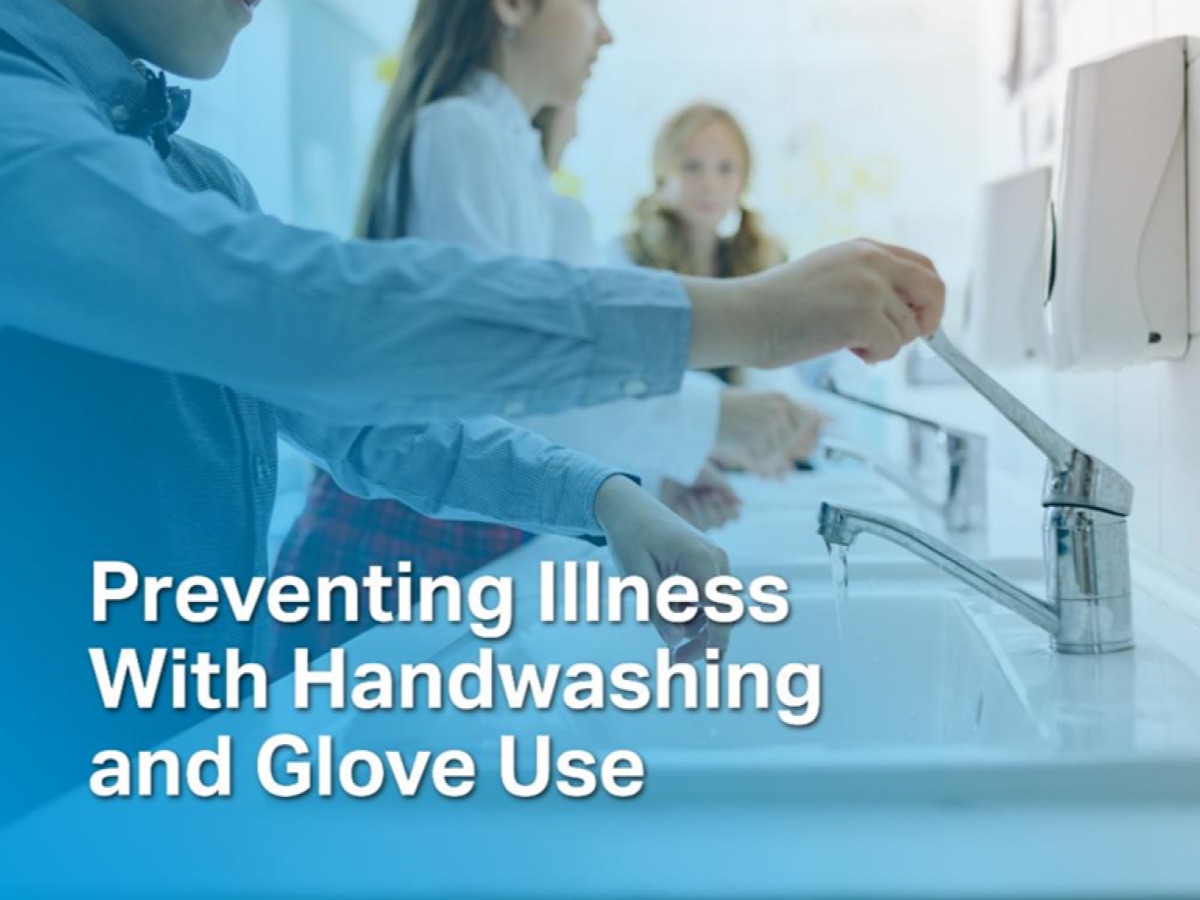Preventing Illness with Handwashing and Glove Use
Institute of Child Nutrition (ICN)
August 15, 2024

Hands can harbor unseen germs that can contaminate food and surfaces and ultimately make people sick. They can also transfer allergens to allergen-free foods. The good news is that proper handwashing and glove use are simple yet effective practices that can help prevent the spread of foodborne illness and allergen contamination. ICN’s mealtime memo provides information on when and how to wash hands to avoid illness.
Cross-Contamination Versus Cross-Contact
Let’s review the definitions of cross-contamination and cross-contact, according to the ICN’s Child Care Center Food Safety Guide.
- Cross-contamination: The transfer of microorganisms from hands-to-food, food-to-food, or equipment and food contact surfaces-to-food.
- Cross-contact: Occurs when an allergen is accidentally transferred from a food containing an allergen to a food or surface that does not contain the allergen.
When to Wash Hands
Practice proper handwashing to prevent the spread of cross-contamination, cross-contact, and illness. Wash your hands before and after each of the following tasks:
- Preparing food
- Eating or drinking
- Participating in food activities
- Treating a cut or wound
It is also necessary to wash hands before the following tasks.
- Starting work
- Serving food
- Putting on or changing single-use gloves
- Handling clean dishes or utensils
- Changing food prep tasks (i.e., working with ready-to-eat (RTE) and raw food)
- Handling allergen-free foods
Lastly, wash hands after the following tasks.
- Using the restroom
- Sneezing, coughing, or blowing your nose
- Handling raw meat/poultry/fish or soiled dishes/utensils
- Touching hair, face, or body
- Changing a baby’s diaper, helping a child in the bathroom, or helping children wash their hands
- Touching an animal/pet, animal waste, or pet food/treats
- Sweeping, mopping, doing dishes, wiping counters, or touching garbage
- Returning from outdoors
- Using the phone
- Hands become dirty or contaminated
How to Wash Hands
The six steps to handwashing are as follows:
- Wet hands with clean, warm, running water and apply soap.
- Lather your hands and wrists, between your fingers, and under your nails.
- Scrub for at least 20 seconds—you can sing the “Happy Birthday” song twice.
- Rinse with clean, running water.
- Dry hands with a clean, disposable paper towel or mechanical hand dryer.
- Turn the water off with a paper towel. Use it to open the door, then discard it into a trash can.

Avoid Bare Hand Contact
Bare hands should never touch ready-to-eat (RTE) foods. RTE foods can be eaten without additional washing, preparation, or cooking. Examples include fresh produce, bread, luncheon meats, and cheese. Any germs on the hands could easily contaminate RTE foods and may cause foodborne illness.
When handling RTE foods, always wash your hands and wear single-use gloves or use appropriate utensils such as tongs, spatulas, forks, or spoons.
Proper Glove Use
Wearing single-use gloves can help keep food safe by creating a barrier between the germs on hands and the RTE foods. Ensure the single-use gloves are food-safe.
Wear gloves:
- When the person handling food has a cut or open wound—cover the wound with a waterproof bandage and a single-use glove.
- When handling RTE foods—unless using utensils, such as tongs or spoons.
Change gloves:
- When interruptions occur or when changing tasks.
- When gloves become torn, dirty, or contaminated.
- Before preparing allergen-free foods.
- After touching surfaces or objects other than food (refrigerator handles, cans, cell phones, door handles).
- After touching raw meats or unwashed fruits and vegetables.
- After sneezing, coughing, or touching skin or hair.
- After 4 hours, even if working with the same kind of food.
Do not reuse or wash gloves.
For more information and a Lunch time example, read ICN’s August Mealtime Memo.
